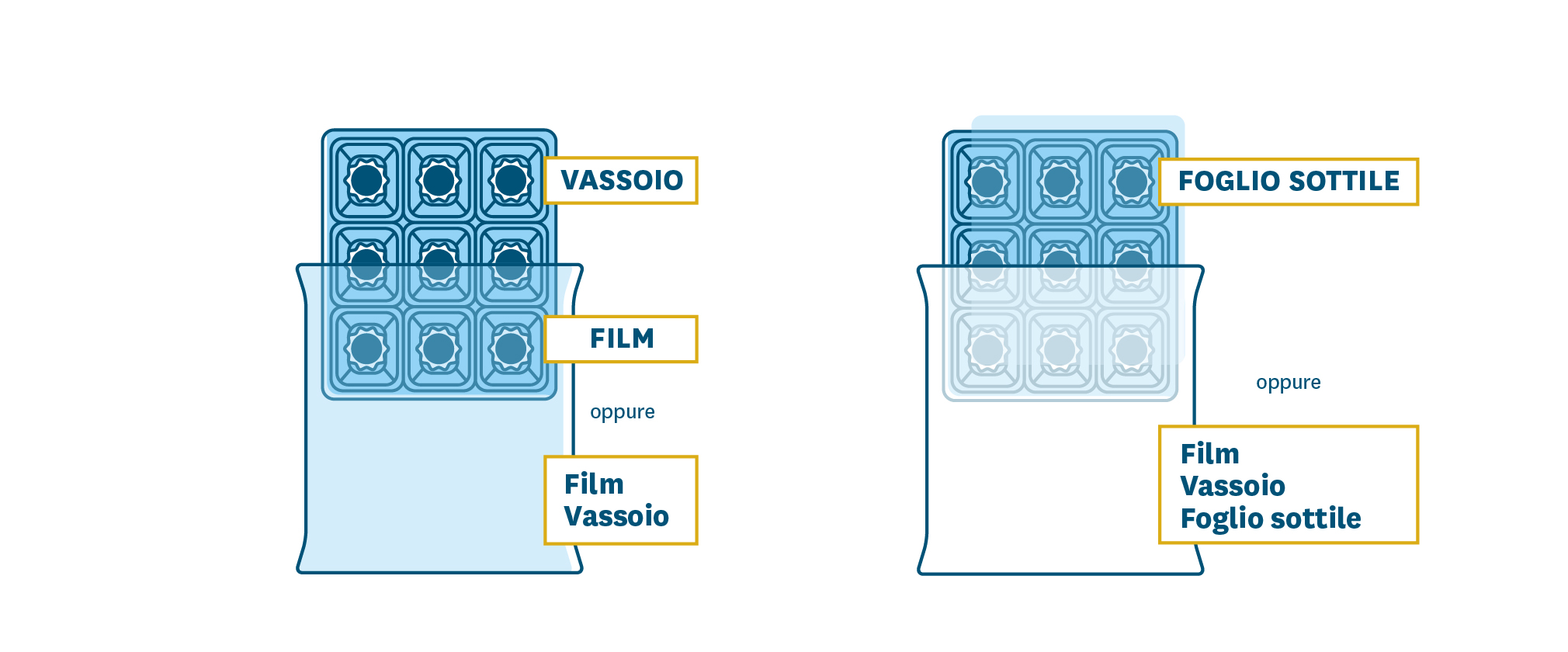Packaging systems that include a main body and other accessory components that cannot be manually separated [1] , must necessarily bear the identification code of the material of the main body, and the indications on collection (which follow the material of the main body).
Where possible, only the identification code of the material can be affixed as per Decision 129/97 / EC also on the components that cannot be separated manually, but, on these, the indication on the collection must not be reported.
If the packaging system, on the other hand, includes components that can be manually separated from the main body, each of these must necessarily carry the alphanumeric code as per Decision 129/97 / EC and the indications on collection.
The environmental labels (at least the alphanumeric coding as per Decision 129/97 / EC) of the different manually separable components that make up the sales unit should be affixed to each component.
Where this is not possible, they may be affixed either to the main body of the packaging, or to another label or any other component that makes the information easily visible to the end consumer.
The same applies in the case of multipacks, where it is always preferable to affix the label to each packaging component, but when this is not possible, the label may be affixed to the sales unit (i.e. on the multipack).
For example, in the diagram below, the ideal choice is to place the label, at least the one identifying the material, on each component, i.e. individually on the tray and film. If this is not possible, then you can place the label of the tray and film on one of the two components.
The same goes for single-portion chocolates (thin sheet): if it is not possible to place the label on the individual single-portion packaging, the relevant information may be included on one of the components of the sales unit.

[1] A component may be separated by hand when the user can separate it completely – without any risk to his health or safety – from the main body, with the sole use of the hands and without the need for additional tools or instruments.
Last modified on 21/11/2021